For those of us who have had the pleasure of experiencing love, we know it takes many shapes and forms. There’s the love of a place or time. The love of a pet or partner. The love of a film or a piece of art, or a truly great novel that has imparted some of life’s most enduring lessons. We may call it adoration or respect or admiration or even infatuation. We may refer to it often, or we may speak of it never at all. In my world, we call it amore.
In my case, the shape of my most profound love comes with many names: spaghetti, bucatini, rigatoni, penne, farfalle, orecchiette, to name a few. Perhaps longer than anything else I’ve committed to in my life, I’ve been eating and studying pasta. Before I could say manicotti, I was taking pasta pointers; my small hands called into service of Sunday dinners—or Mondays or Thursdays or Saturdays, for that matter. Pasta-making, to my Italian grandmother, is part of a near-daily routine. But in the modern day, making pasta is often reserved for special occasions and dinner parties meant to impress. It’s an irony, given its largely peasant origins in Italian history.
Today, the people who make pasta are typically found in commercial kitchens, where they’re armed with tools and a brigade of supporting cooks who can assist in the undertaking of mixing the dough, forming and rolling and cutting and winding and braiding and filling and pinching and creating the shapes oh so dear to my heart. When the rest of us want a dish of rigatoni, we have to book a seat at one of these restaurants, or else grab a square box from the shelves of some supermarket—into which centuries of culture are conveniently packaged and sold for $1.39. Fewer nonni are out there like mine. And fewer still are those in the generations they’ve begotten who are appreciating, learning and carrying on those traditions.
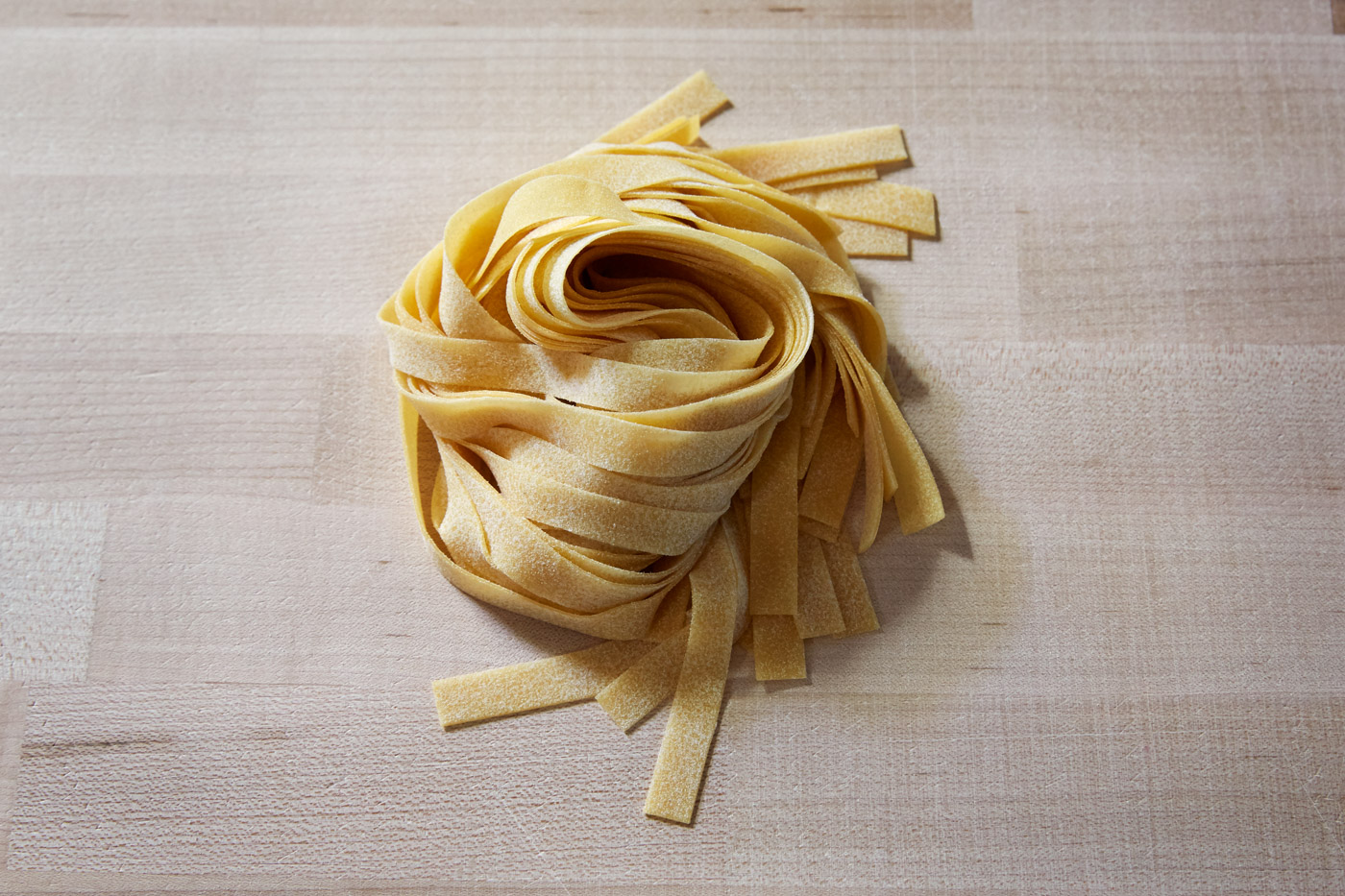
Appreciating tradition is about more than the physical manifestation of culture—that tangible, edible food on the table. It’s about the stories behind those dishes, what they represent to their people, and how they came to be. Much conversation has been in culinary food world in recent years of sauce “stickiness,” which shapes are appropriate for which sauces, how the ridges or indentations are intended for condimenti to settle in. These things don’t just happen willy-nilly.
The shapes might be a serious business, but they also indicate a certain whimsy specific to Italian personality. I didn’t have alphabet soup growing up, but I did have bow ties, wagon wheels and corkscrews, celestial bowls of chicken broth brimming with tiny stars, and meat-filled dumplings with a name that meant “little hats.” And although I thought I’d catalogued all the world’s pastas at my family’s table, when I stepped into the wider world of dining, it quickly became clear I could speak to hardly a fraction.
To continue my pasta education, I sat down with one of the country’s most renowned pasta maestros, Chef Evan Funke. His Venice, California, restaurant, Felix, has become a destination for dough-lovers near and far. Funke’s specialty is pasta fatta a mano—or pasta made by hand—an increasingly rare art in an age of automation and spectacularly unnecessary (but oh-so-shiny!) kitchen gadgetry. In pursuit of his own education, Funke went old school, weaving his way throughout the Italian peninsula, where he absorbed ancient techniques, as well as those tales of pasta provenance.
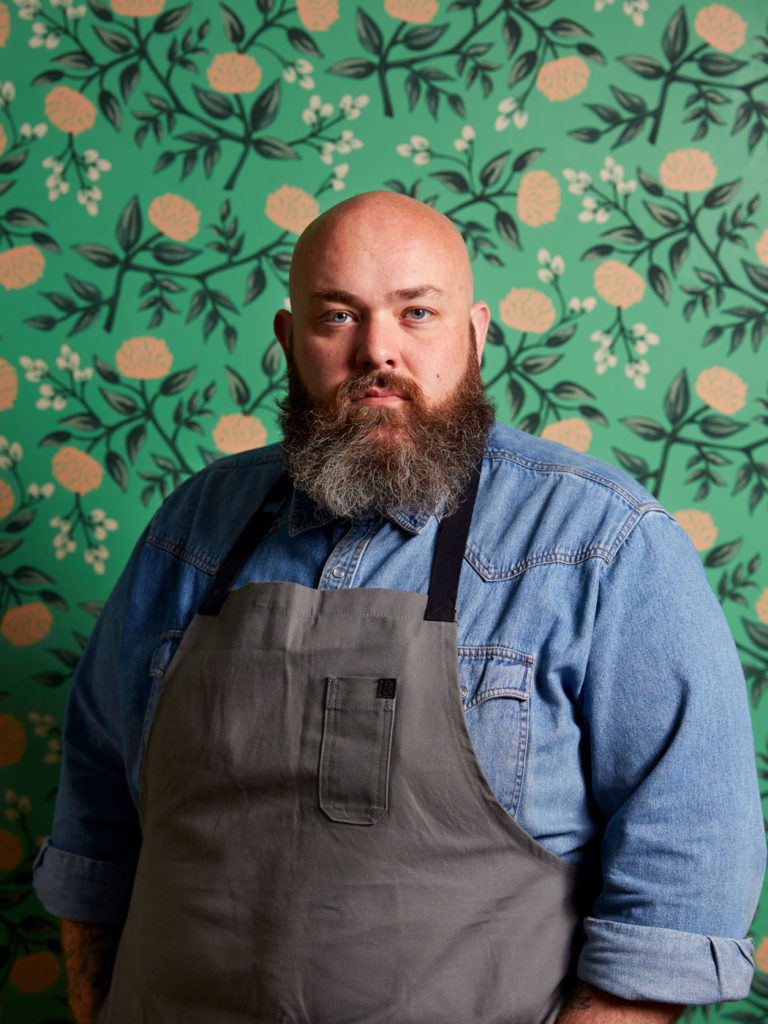
——
“What I do is specialize in the archeology and the anthropology connected to certain shapes that are rare or extinct,” Funke lays his large hands on the table along with his philosophy. And I hear him. I really do. But I can’t say I’m not at least a little distracted by the aromas coming out of his kitchen—basil, rosemary, simmering ragu, and the distinctive yeasty dough that will become his signature, ethereal, light-as-air Sicilian sfincione.
“Pasta as a genre is massive and there’s no way anybody could ever cover the entire subject in a lifetime,” Funke explains, as if reading my mind. The fact is, “pasta” is not some singular, unifying national dish, as some iterations might be considered (ahem, I’m looking at you, spaghetti). “You have three thousand years of regional culinary specialties, and then only a couple hundred years of unity as a country. For the better part of those millenia there was no culinary crossover.”
Despite Italy’s unification in the late 1800s, today’s twenty Italian regions remain unusually individual (in fact, five regions fought so fiercely against joining the union that they were granted certain autonomous powers, particularly in bordering areas). The foods of each reflect their own histories of colonization and cultural diversity. For example, northern regions influenced by their Alpine position and proximity to Eastern Europe, while southern Italian cuisine has distinct evidence of the Middle East.
But of course, people were cooking and eating long before the unification. Era is a major factor in Italian food, from the ancient Roman Empire to the Middle Ages and Renaissance, through two world wars and the shifting populations of the modern day, Italy’s position throughout the course of time has made parts of it a stomping ground for international militaries, a bargaining chip to be awarded at the conclusion of battles and treaties, and a stopover or destination for migrants of many nations. “Every single time any region was invaded, the Italians were very good at taking what they could from that invader and then folding it into their culture,” Funke says.
What was brought along or left behind has been a major part of each region’s edible vernacular. “If you look at any of the coastal regions, or any of the islands,” Funke says, “you see this enormous amount of imprint from foreign bodies. From the Moors, from the French, from the Spanish, from the Portuguese. If you go to Sicily you see all of these African and Arab influences—dates and dried apricots and pine nuts and almonds.”
Of course, the natural geography contributes to what makes it to the table. “The center of Italy is the bread basket; it’s where all the wheat is grown,” Funke says of the regions of Tuscany and surrounding. “There are microclimates that live within that peninsula—you never see olives being grown in the Veneto or Emilia Romana.”
There are whole regions in which olive oil is hard to come by, if it’s available at all. Many northern regions create more butter-based dishes, and there are areas where the tomatoes many assume are ubiquitous in Italian cuisine are nowhere to be found. “They put such an emphasis on nurturing the land so they can live. They only eat what is seasonal, they only eat what grows around them,” says Funke. So there are also regions that rarely dip into the pasta pool at all, like northern areas that rely on polenta and risotto, where wheat is scarce.
In other regions, foreign influence is less about ingredients as it is philosophy. “Piemonte is very, very close to France, so they have the mindset of the French—to take whatever they do and make it as close to perfection as possible. The Piemontese people have chosen to take just two shapes and perfect them,” Funke says. “One is tajarin, and the other is agnolotti del plin.”
“Each one has a very specific story,” according to Funke. In reference to the latter Piemontese specialty, he says, “Agnolotti comes from a small kingdom where a castle was laid under siege.” When the battle finally ceased, he says, the king looked to commemorate with a banquet, which stressed the royal chef.
“His cook says to the king, ‘I’m so sorry, we’ve been under siege for months and months, and we have nothing but these four bones and these four pieces of meat. What shall I do?’ So the king says, ‘Make pasta.’” The cook took what little was left after their conflict and basically played a medieval round of Chopped. “A brodo with the bones and a filling from the meat, he makes agnolotti.” Allegedly, the cook was called Angelot, and when the dish became a regional specialty, the name stuck.
This is part of the fun of eating pasta—the glimpse into Italian life and lore. “Whether or not that’s true, it’s immaterial because that’s the beauty and romance of Italy,” says Funke.
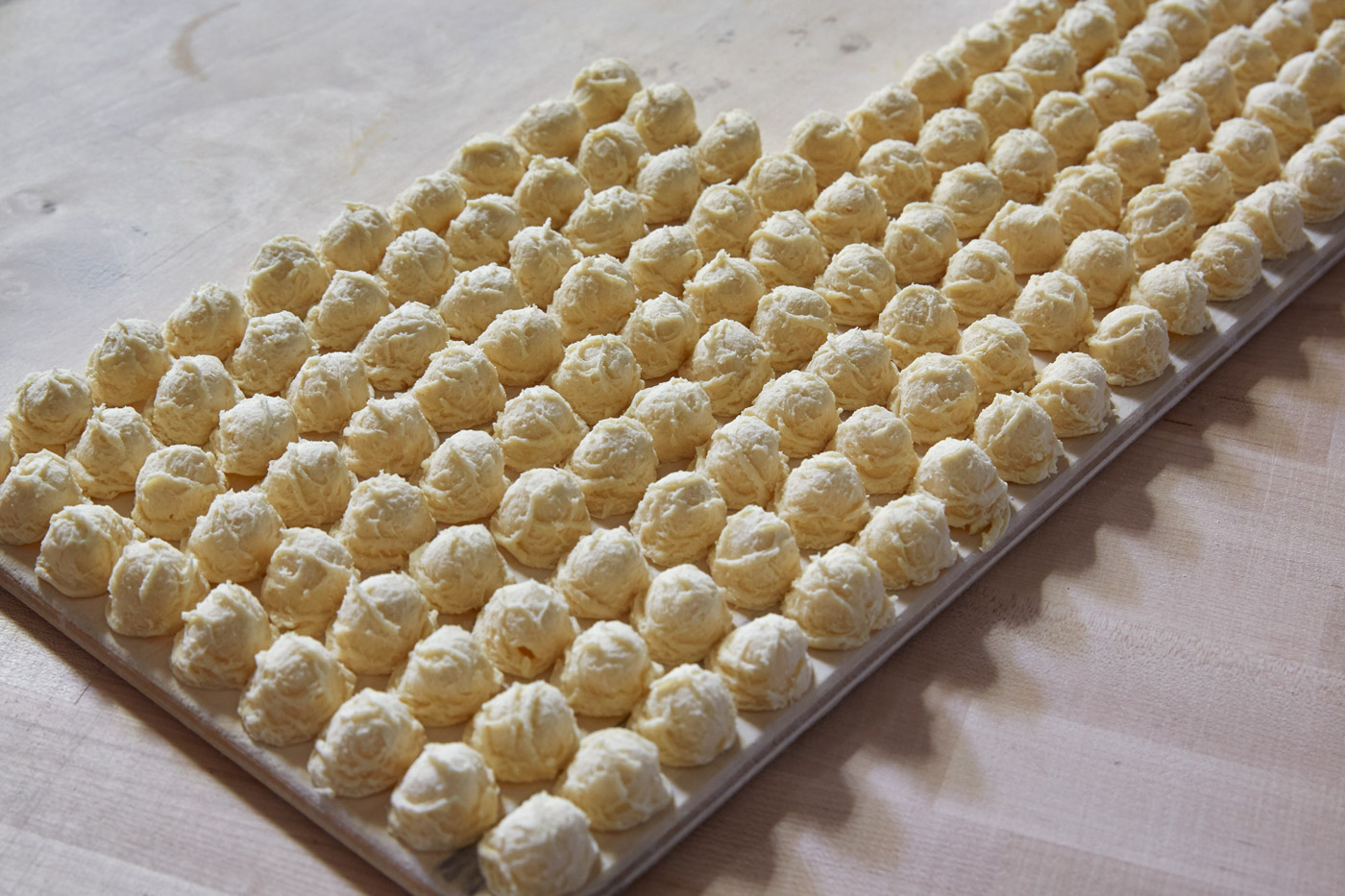
The further beauty of learning these stories and histories through pasta is that unlike much of recorded history, which is controlled by the rulers and the wealthy, this edible version allows for the stories of and insights into the underclasses as well.
“Eggs were looked at as a source of protein; pasta was a source of fuel. You would never waste your eggs putting them into pasta unless you were in a fairly wealthy area like Bologna, Emilia Romagna, Lombardia, Piemonte,” says Funke. “If you look at Emilia Romagna and Piemonte and the Veneto and the northern regions, there’s a lot of influence from France, and the notion of refinement being associated with high class or royalty. That’s why you see all of this very refined flour in the north that you don’t see in the south. The tajarin is from Piemonte—for one kilo of flour it’s typically forty egg yolks. It’s an extremely rich pasta dough.” Furthermore, when they’re in season, tajarin is served with white truffles—it’s hard to imagine a more decadent dish.
But pasta’s many forms made it a food for all people—just with some slight improvising. “In the south, [pasta is] water and flour, water and semolina, water and burnt flour—grano arso,” Funke explains.
If the rich egg-laden doughs of the north tell tales of royalty, prosperity and opulence, orecchiette grano arso shares a humble story of Southern Italy’s profound poverty. “Orecchiette is semolina and grano arso,” says Funke. The latter is literally a burnt flour.
“Historically, the acreage of wheat would be reaped, and then in order to restore the nitrogen to the soil they would burn the fields,” Funke explains. “Poor people would come behind that and sift out the burnt farro or spelt or wheat berries, and then they would grind that into grano arso, mix it, and cut it with semolina.” That a community was so poor, they literally gathered ash from fields and found ways to create food is a testament to the culture’s resourcefulness and ingenuity, and a heartbreaking reminder that the adorable “little ears” may not have always seemed so charming.
Funke says poverty didn’t impede creativity. “The shapes themselves were born from the ingenuity of poor people. If you have to eat the same shit everyday—flour and water—what are you going to do to keep it interesting?”
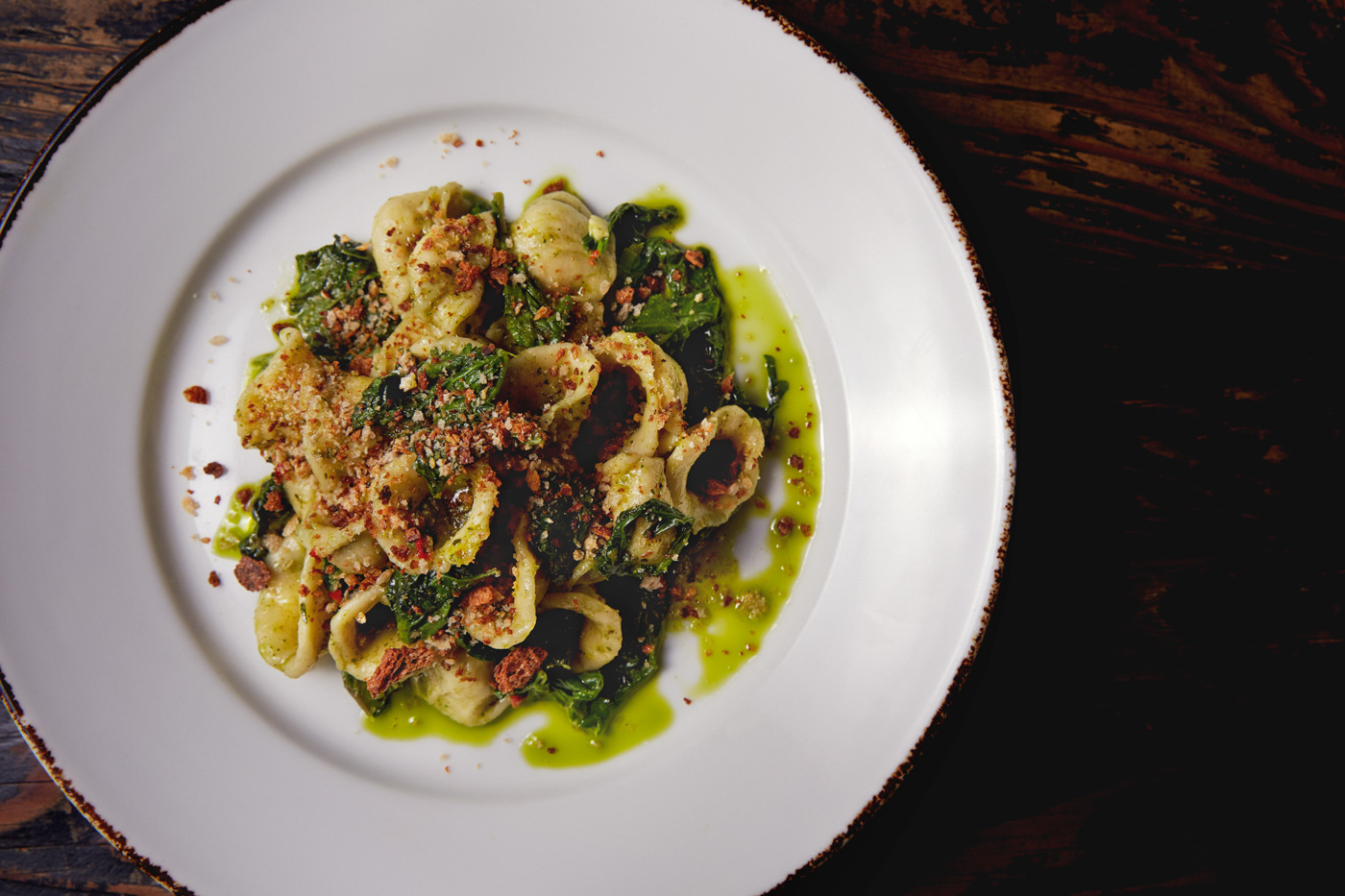
That extemporization occurred at every level, which is in part why the pasta canon became so vast. “It’s not just regional specificities, but also changes within the city, changes within the household, changes within the family,” says Funke.
And beyond differences of shape and dough composition, there is also the class of pasta secco, or dried pasta. Funke says, “The extruder was invented in Naples by a brick maker.” The mason wondered why the same technology from a clay extruder couldn’t be applied to pasta-making. So we have the Napoletano culture to thank for more than just fantastic pizza. “The reason why [pasta secco] was successful in Naples was the natural ebb and flow of the temperature. During the day there was a fluctuation of temperature and sea. It would be warm then cool, warm then cool, so it would dry the pasta very very slowly. Which is the key to dried pasta, you have to dry it very, very slowly.” Without a hint of irony, Funke notes, “If you dry it too quickly, it becomes a brick.”
As capricious as the development of pasta may seem, Funke’s modern-day approach is much more measured; he says it’s the only way to set the narrative for his customers. “The more elements you can control, the more you can control pasta,” he says. At Felix, temperature and humidity, among other factors, are meticulously monitored, to keep the dough content. Without that diligence, it’s like facing the instinctive, the feral, without the benefit of speaking the same tongue. “Pasta is an animal, directly affected by its immediate environment; if it’s raining outside, it will know.”
Funke has made it his career to communicate with that animal, but he didn’t grow up in Italy where it might be his first language. Instead, he had to build the vocabulary, one dish at a time. “I spent about twenty days living in Rome, eating nothing but cacio e pepe morning, noon and night.” And like the many dialects of the Italian language, there are different ways to prepare each dish. “There’s a lot of dogma that surrounds the making of cacio e pepe. If you ask a Roman, they’re going to say tonnarelli, Pecorino Romano, black pepper. That’s it; nothing else. But what they do in a restaurant is completely different. I know this; I’ve seen it first hand.” For Funke, the most important part is, “maintaining the purity of the dish.”
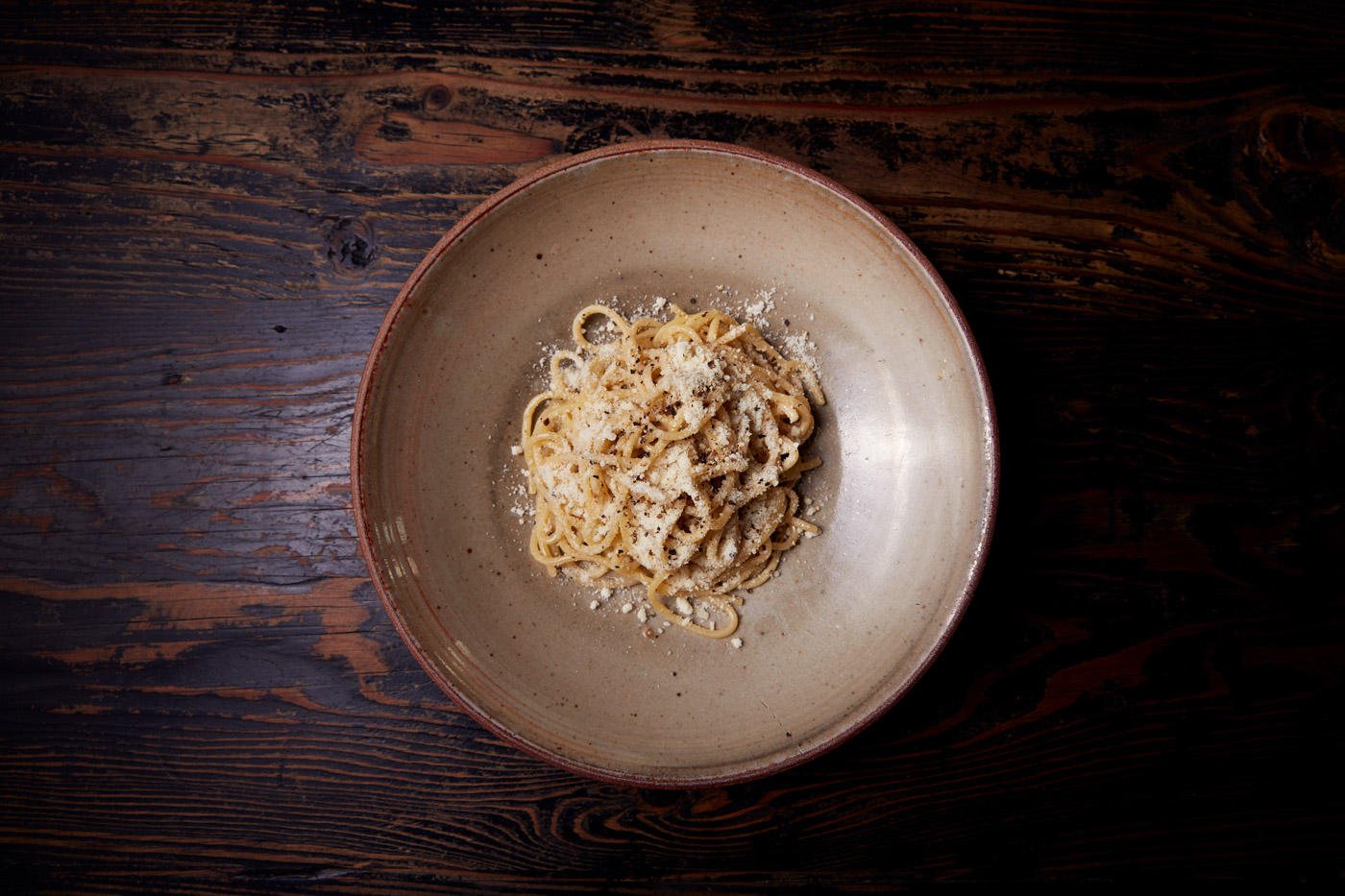
The originators of cacio e pepe were probably far less concerned with how it might be interpreted in the modern day. “The dish comes from the shepherding society of Lazio and Umbria. It comes from the pastoral lands of this area where shepherds would go away from their homes for long periods of time,” Funke describes. Shepherds had to pack appropriately for the journey; that meant sturdy, less perishable items that would both fuel and function. Dried pasta, hard, aged cheese, and black pepper—the three universally agreed upon components of the dish—fit the bill. The last item was perhaps the most practical on cold journeys. “The black pepper is there for thermal reasons. Nothing else,” says Funke.
Today, it feels as if cacio e pepe is the most popular thing to come out of the peninsula since pinot grigio in the ‘90s. But Funke says, “The popularity of cacio e pepe is very modern. If you look at black pepper, [it] was extremely expensive, up until the 1700s when [it] became something normal people could actually buy and use. And cacio e pepe only gained modern popularity in trattorias and osterias in Rome in the ‘50s and ‘60s. Before that it was just in the fields.”
Whatever the backstory or origin, it can be counted upon to hear a common word with respect to every dish—love. “Tagliatelle is as close to grandmother’s love as you can possibly get,” Funke says. “It’s one of the dishes that made me fall in love with Bologna. Bolognese are kind of funny in the fact that they’re kind of like a horse with blinders on. They only see Bolognese; they only eat Bolognese. And the ragu is specific to whatever grandmother you’re talking to.”
And yet, regardless of those recipes from home to home, region to region, there is still pasta synergy—it’s often just a matter of what something’s come to be called. “There’s a lot of sharing of shapes. If you look at the entire list [of names] of shapes that exist, you could probably multiply that by five if you included all the dialectical changes. “Look at tortellini,” Funke suggests, and begins counting off on flour-dusted fingers. “Tortellini, tortelloni, tortellacci, balanzoni—all the same shape, four different names, four different sizes. But that exists everywhere.”
No region seems to want to resign their name for something in service of a more commonly understood, universal term. Perhaps that speaks to the larger Italian ideology of individuality evidenced regardless of its unification.
“Italians have a word for this—campanilismo,” Funke says, which means, “‘Pride in one’s origin.’ It doesn’t matter if you’re from Bologna or Bari; everyone shares this common pride in where they come from. No matter what the difference is—food or politics or socioeconomics—they still all share this same ideology.”
I consider this with respect to the shapes of each pasta. In fact, it seems a cultural disservice to consider them all the same culinary category, a blurring of lines and regional identities that each deserve a voice.
Perhaps differences may someday have to be set aside in effort of preservation. Whatever you want to call it, pasta is an increasingly rare art, not only here in the U.S., but even in the old country. “It’s disappearing before our eyes,” Funke says. “So much of Italian culture is being strangled out by convenience food. Less and less people are teaching their offspring to make pasta, and that generation is not interested.”
For a culture that has endured thousands of years of civilization and been pervasive in so much of the world, the threat of the extinction of certain shapes is not only a sad and real possibility, it’s a loss to the larger fields of anthropology—edible and beyond. “I don’t know a family that hasn’t had spaghetti and meatballs on their table, whether that’s Chef Boyardee or made by an Italian nonna,” Funke says. “It’s immediately familiar to people. There’s such a connection with Italian food. People say Italian food is having a moment. No, it’s having a millenia.” Without efforts like Funke’s, pasta shapes will cease to be a living animal, and instead be relegated to artifacts and fossils.
——
Call me polyamorous, call it equal opportunity, call it campanilismo—there is something to be said in the way pasta provides a reason to seek out and appreciate each region. To love each for its own individual characteristics and unique story. Each one a verb that keeps the national language, regardless of dialect, in constant motion—carrying it across the globe to grace the tables of so many cultures and helping to preserve its existence, not unlike the seed of a tomato plant or germ of durum wheat.
In that sense, pasta culture makes me not only proud to be a descendant of the city of Rome and the region of Lazio by blood, but to be Italian in any shape or form. The story of pasta is about a people who, regardless of region or allegiance, never for a moment ceded style or flavor or flair—or even fun. It’s about common strands (perhaps of spaghetti—or tagliatelle or pappardelle) that have bound divided populations, and a people who, without giving up individuality, are connected by identifying characteristics—passion and creativity, perseverance and ingenuity.
Or, put more simply by Funke before he heads back to the kitchen and I to a table to await my evening reservation, “Pasta keeps it all together.”
Now that’s amore.





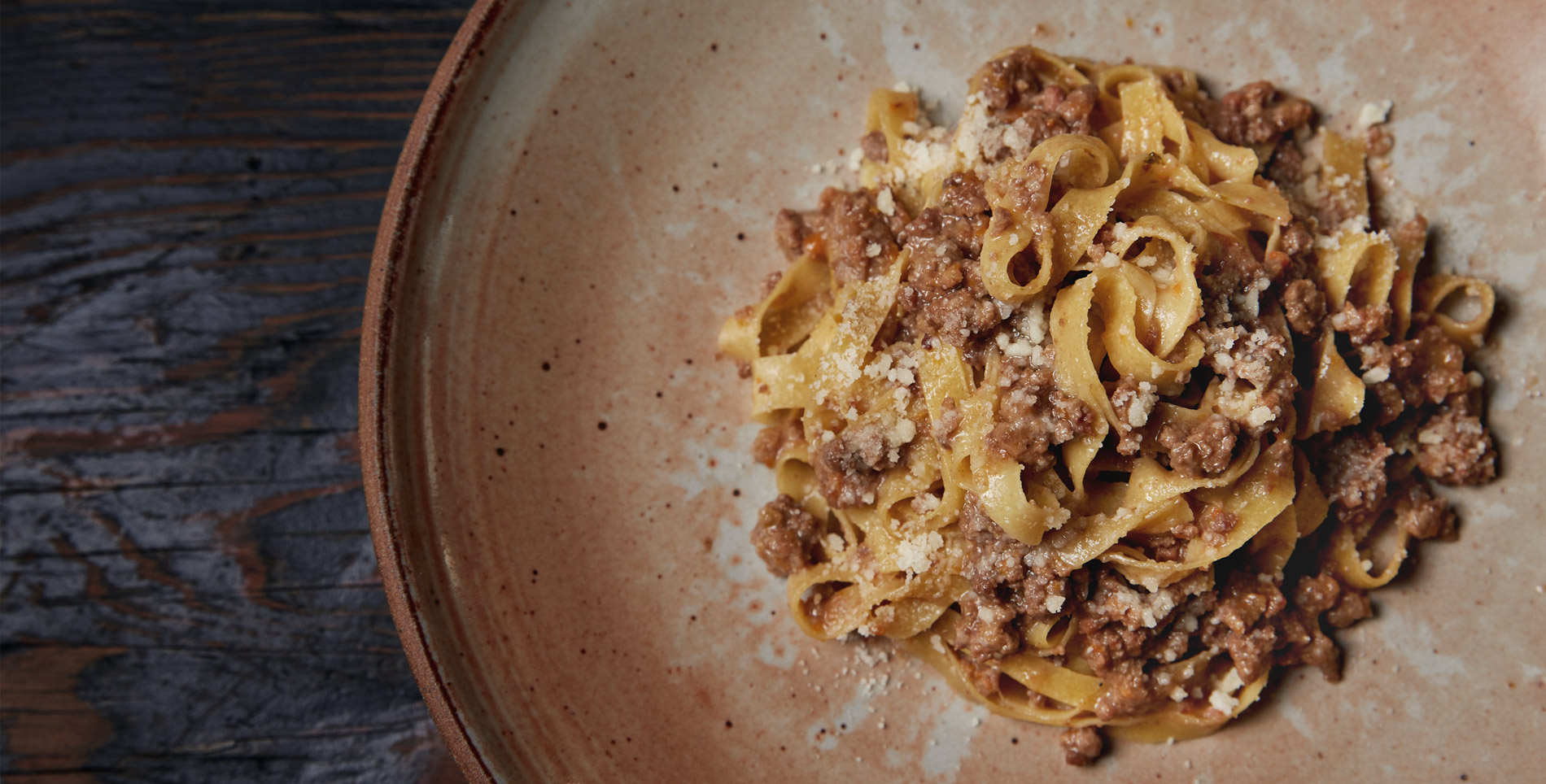

Our comments section is for members only.
Join today to gain exclusive access.